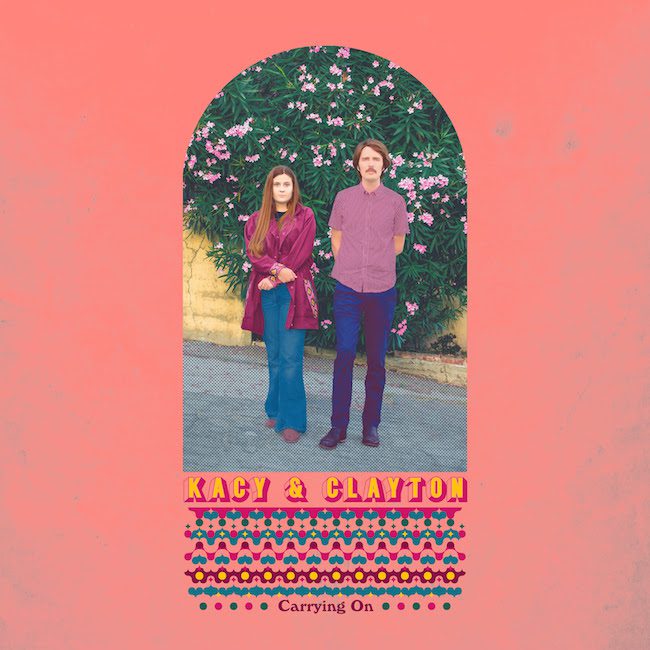Kacy & Clayton’s ‘Carrying On’ Moves Forward in Time While Rooted in Place

If the art we create is a reflection of the geographic piece of land that shaped us, Kacy & Clayton’s new record Carrying On is Wood Mountain, Saskatchewan, through and through. With its arid summers and bitter winters, it has built a kind of intensity in the duo that we began to hear with 2017’s Siren’s Song, but can now feel fully and deeply. We can feel the rolling, sun-drenched prairies of Saskatchewan in Clayton’s low quiver on the road-worn “High Holiday” (one of two songs on the record to feature bass harmonica from the legendary Charlie McCoy) and the trickle of its river waters in Kacy’s gliding warble on the album’s title track.
Working, once again, with Jeff Tweedy at the producing helm, Kacy & Clayton tap into their roots lyrically and aesthetically. The pastoral groove of “The South Saskatchewan River” paints a stark landscape of the place they call home, where the “hoar frost [quivers],” and where nature is being pushed out by man. Factories and new houses have replaced the spot “where the sage and sharp-tailed grouses / Used to look for spouses.” On the celebratory tune “That Sweet Orchestra Sound,” they harmonize dreamily as they sing of springtime, when “the water is swelling / the creek bed is wide / and it’s a long messy road into town.” It captures that feeling of elation when a long cold winter is finally over and we come out of hibernation to reunite with friends at the local watering hole, feeling human once again.
That humanity finds its way into every song on Carrying On, whether in the intricately woven family ties of “Mom and Dad’s Waltz #2,” in the steadiness and peace of mind a devoted lover brings in “Intervention,” or in the emotional rush that comes with intense heartbreak on “In a Time of Doubt.” And all through it, we are reminded of the record collection that kept them company as they came of age, from classic 1950s country to the psychedelic 1960s and traditional folk music. Those influences are still present, but Carrying On represents a sonic shift for the band as they come into their own.




